Yabby Cellular GPS & WiFi - Getting Started
Table of Contents
The Yabby is a super compact, rugged GPS tracking device that has been designed for tracking bags, tool boxes, containers, trailers, skip bins, Animals and other assets where long battery life and small form factor is required.
This getting started guide is only for the cellular version. The cellular version comes in 2G or LTE Cat-M1/Nb-IoT and uses GPS or Wi-Fi to locate. The 4 variants are:
- Yabby 2G + GPS
- Yabby 2G + Wi-Fi
- Yabby LTE CatM1/Nb1 + GPS
- Yabby LTE CatM1/Nb1 + Wi-Fi
Where GPS and GPS components are referenced it only applies to the GPS versions, the same goes for Wi-Fi.
digitalmatter.com
Read more about the Yabby GPS and the Yabby Wifi on our website
Datasheet & High Resolution Images
Yabby Downloads
View the tech specs and high resolution device images for the Yabbys
In the Box
You'll get a compact box containing the Yabby. The 6 housing screws will be in a small packet inside the housing.
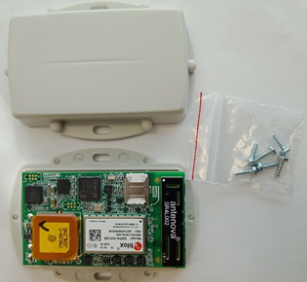
Setting it Up
SIM Card
The Yabby uses a Nano SIM card – form factor 4FF. The SIM holder is on the underside of the PCB so the device will need to be lifted out of the housing to insert the SIM.
When handling the Yabby be careful not to touch the GPS antenna, to minimise the risk of damaging the sensitive GPS amplifiers with static discharge. It is recommended to wear an anti-static wrist strap.
Slide the SIM into the holder with the keyed corner first and the SIM contacts orientated down to the main board. There is a marking on the PCB to indicate this.
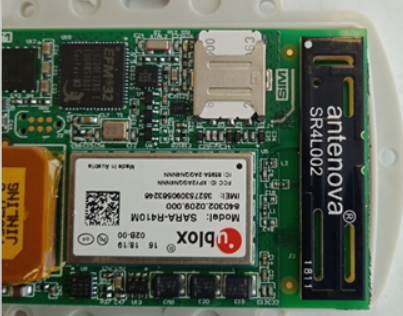
To easily get up and running:
- The SIM should not have a PIN on it, unless you use the device specific PIN.
- The SIM should have credit or airtime
Remember
Make sure once you're online, you should Set the Network Profile (APN and bandmasks) for the best performance.
Batteries
The Yabby Cellular uses 3 x AAA 1.5V “off the shelf” Lithium batteries. These are generally available at retail outlets from manufacturers like Energizer. We have found Energizer Ultimate Lithium Batteries to perform well. Industrial 1.5V Lithium AAA batteries are also available at bulk pricing. Lithium batteries have excellent performance and capacity, which allows the Yabby Cellular to be used in extreme temperatures and climatic conditions that other tracking devices simply cannot operate in.
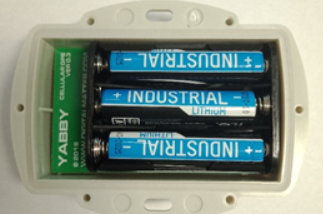
Warning
Note: The Yabby does not have reverse voltage protection. Insert the batteries with the correct polarity.
Do not use Alkaline Batteries
It is very important to use 1.5V Lithium AAA batteries. Alkaline batteries have a discharge profile that will render the device useless at about 50% of their capacity. Lithium batteries have a flatter discharge profile, allowing all their capacity to be used by the device
Once inserted, the LED should flash continuously. The LED behaviour is described below for reference. If it does not, it means the unit has not yet reset. In this case, remove the batteries for a minute or two to allow any residual charge to drain, and then reinsert them. Failure to reset the unit will prevent automatic APN detection, and proper resetting of the battery life statistics.
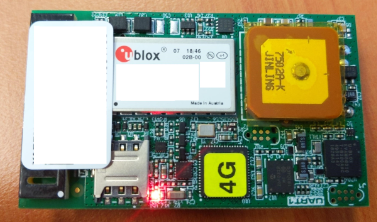
LED Behaviour |
Information |
|---|---|
| Off | If the LED is not on at all, it is likely that the battery is flat, or that the device is asleep. Measure the battery voltage with a multi-meter. If there is charge and you wish to see some activity reset the device by removing and replacing the batteries. |
| From Power-on-Reset, LED Flashes for duration of startup connect, GPS fix and re-connect. Or until 10 minutes have passed |
After a reset of the device, the LED will flash. It will continue to flash until it has completed its start-up sequence of: connect to server (4Hz flash); get a GPS fix (1Hz flash); and reconnect to the server (4Hz flash). If the connections are not successful, this will timeout after 10 minutes. |
| After first sleep - off | After the start-up sequence has completed (connect, fix, connect) or after 10 min, the LED will be switched off. No LED flashes will occur, until a power-on-reset. |
| In Recovery mode - Flashes in Trip | The LED will flash once every 5s during trips in recovery mode. |
Housing
Seal the device carefully to achieve the IP-67 rating.
- Ensure that the clear silicon seal is in good condition, is lying flat, and is not fouled by any plastic debris or other material.
- Close the housing, and gently squeeze it shut. Foam on the lid will compress against the batteries, holding them firmly in place.
- Tighten the 4 screws to a uniform tightness. On the first assembly, the screws may be quite stiff. Ensure the housing closes together evenly.
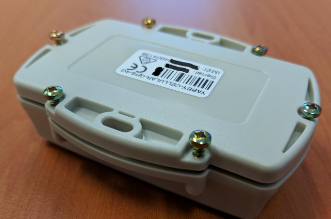
If you wish to replace the batteries and open the housing, be sure to check that the silicon seal is in good condition before closing the housing again. Digital Matter can provide replacement seals if need be.
Getting Online
Once the batteries are inserted, the internal LED will come on and flash. The device will do the following:
- Connect to the server: If the SIM card works, the device will connect to the OEM Server. It will attempt to download any firmware and parameter updates. It will fetch fresh GPS aiding data.
- Get a Position: the device will attempt to get a GPS/Wi-Fi fix. Speed this up by moving to an area with good signal. (Outside for GPS)
- If you are near any access points the Wi-Fi sniffer should detect these.
- Reconnect to the server: The device will attempt to connect again to upload its position.
Troubleshooting Steps
Default Settings
Changing Settings
This is handled via our OEM Server interface. See How to change the update rate on the Oyster2, Remora2 and Yabby
Yabby GPS
By default, the Yabby is setup for Movement Detection. The following default settings apply:
Yabby GPS
- Out of Trip:
- 12-hour heartbeats. This is a GPS/Wi-Fi point and an upload every 12 hours.
- When Movement is Detected by the Accelerometer:
- Upload on Movement; Start Trip
- GPS records position log every 15 mins, uploads upon end of trip
- Upload on no Movement detected for 5 minutes; End Trip
NB: The default is only for uploads on the END of a trip. So if the Yabby is on the move for an extended period, we won't see any updates until movement stops. This can be adjusted in settings.
Yabby WiFi
- Out of Trip:
- 12-hour heartbeats. This is a GPS/Wi-Fi point and an upload every 12 hours.
- When Movement is Detected by the Accelerometer:
- Upload on Movement; Start Trip
- No in trip log
- Upload on no Movement detected for 5 minutes; End Trip
These settings and many more are configurable in the OEM Admin Interface. See the Yabby Parameter article at support.digitalmatter.com for more details on different parameters and their effect. The defaults provide a good starting point. It is important to monitor and tweak your settings to ensure the battery life is acceptable. Incorrect settings can flatten the batteries quickly. Contact Support for help with this.
How the Yabby Functions
Getting a Location fix
Yabby GPS
The Yabby GPS uses its GPS module to determine its position, as per Digital Matter’s other devices. Indoor or dense urban environments can greatly impact GPS performance, sometimes leaving devices unable to get a fix.
Battery powered devices - Overview of operations
see how the devices function in this article on our support portal
Yabby WiFi
- The device scans for Wi-Fi Access Points (Wi-Fi Routers) and records the signal strength received from each.
- The locations of these access points are known.
- The device sends the signal strength information to the server using GSM.
- The server calls Google’s Geolocation API, which uses the information to triangulate the device’s position, based upon its proximity to various Wi-Fi routers.
- If Wi-Fi signals cannot be found, the device has cellular fall back – it will determine its position based upon which cellular tower it is communicating with. The accuracy of this measurement will be quite unreliable (potentially ± 1km in urban areas), however it will give an idea of where the unit is.
Wi-Fi signals can be received indoors (even basements) and in dense urban environments, hence Wi-Fi geolocation has the ability to provide a position where GPS will not. In practice, in an urban environment, accuracy should be around ± 30m
Note
The device can not connect to Wi-Fi and send it's data to the server. The device only uses Wi-Fi sniffing to locate the device. All data that is sent to the server, is sent using a cellular connection - hence a SIM card is necessary.
Movement Tracking
The Yabby uses its accelerometer to detect movement. Operation is as follows:
- Accelerometer wakes the unit
- By default, a wake filter is applied. The filter only starts a trip when it has seen 1 second’s worth of above-threshold movement in a 4 second period, or repeated short movements over several 4 second periods. Disabling the filter results in any accelerometer movement above the Wakeup Threshold (in Accelerometer Settings section of System Parameters) waking the unit.
- Unit immediately determines it is moving – this is equivalent to entering a Trip for other DM devices
- Once moving, the accelerometer no longer wakes the unit
- It wakes every two minutes on a timer, and does two things
- Asks the accelerometer if there was any movement in the last 2 minutes
- If it is time to log a position, it gets a fix and records it
- Once the accelerometer claims there has been no movement for a while, the default is 5 mins (Movement End Time parameter), the device decides movement has stopped.
- The GPS version will also wait until the speed reported by the GPS is low, to prevent movement ending when the movement is very steady and constant – e.g. a train where acceleration is minimal
Uploading can happen before, during and after movement, optionally. The default is before, after, and no uploads during movement.
Heartbeats happen if there has been no upload for a long time (heartbeat period).
